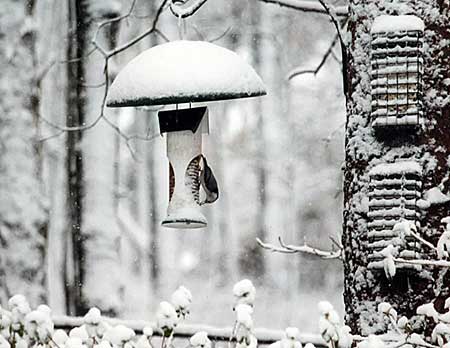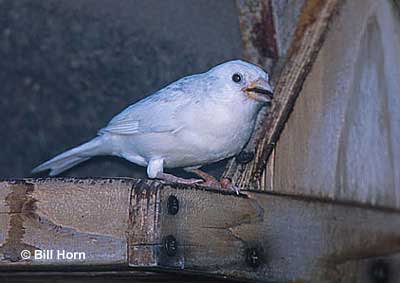Bird Feeders
Selecting the right feeder is not difficult but there are several things to consider.
If you are just starting out you may wish to build your own platform feeder. This can be as simple as a flat piece of wood mounted on a pole. It can be mounted close to the ground or several feet up.
A long and narrow platform is best. It is inexpensive to build and easy to use. Just spread your sunflower seed on the platform and you’re done.
Platform feeders are attractive to a variety of species and easily accommodate offering a variety of food types, including seed, fruit and nuts.
The disadvantage to a platform feeder is the food supply has to be replenished more often than other designs. They also invite squirrels and perhaps some undesirable bird species.
They do provide the inexperienced with the opportunity to learn which birds are in their area and which birds they wish to attract, before purchasing a commercially manufactured feeder.
If you do not wish to build your own feeder, inexpensive feeders are available for under $20.
Select from the menu on the left for information on the major feeder styles and their features.
Birds have a pretty strong preference for the foods they eat. Knowing which species prefers which type of food, and where to serve the food, will have a big impact on your success in attracting birds to your feeders.
Tips on feeder location and feeder types
- Tube and hopper feeders are generally pole-mounted or hung from a tree limb.
- Platform feeders are generally mounted on a pole.
- Suet can be served in a hanging suet feeder or just spread on the side of a tree
- When ground feeding, do not spread more than a days supply.
- Fruit can be placed in a shallow dish, or on a platform feeder
Match feeder, feed and species
Some feeders are designed for a particular kind of seed. One design might be for sunflower or mixed seed while another is for feeding Nyjer® (thistle), a popular seed for attracting finches.
Knowing what kind of birds you wish to attract can help you select the proper feeder and feed type.
Fortunately, a wide variety of species enjoy sunflower seed and there is a variety of both tube and hopper feeders that accommodate sunflower seed.
Prepare for squirrels
If you know squirrels are in your area, be prepared to put up with them or plan to add a baffle or purchase a feeder with a squirrel-proof metal cage around it or another squirrel-proof design.
Squirrels can be quite a challenge so if they are in your area. You may wish to read the Squirrel section before selecting your feeder.

Winter is a favorite time to feed birds. The baffle on top provides some protection for this white-breasted nuthatch and helps keep the feeder open for business. Note suet feeders on the tree.
Feeder location
The location of your bird feeder may also affect the types of birds you attract. Sparrows prefer to feed low to the ground while species such as goldfinches prefer an elevated feeder.
If you are having few visitors to your feeder, give it a little time; the birds will find it.
If you want to accelerate the process mount your feeder on a temporary basis closer to the birds’ natural cover or food supply. After the feeder has been discovered it can be moved it to a better viewing location.
Window collisions
Window collisions are a major problem for birds. Millions of birds are killed each year after colliding with tall buildings, especially during migration.
Home window collisions are also a problem. To minimize window collisions, some experts recommend the following feeder locations.
- Within three feet of the window – birds leaving the feeder will not be able to build up enough speed to harm themselves.
- Located over 30 feet from windows. This distance gives birds time to recognize the danger and change course.
Species diversity
To attract a larger variety of species you will want to maintain more than one bird feeder (feed) type. A combination of sunflower seed, finch feed, suet and water can be amazingly effective in drawing birds into your yard.

You never know what might show up at your feeder. House sparrows are not usually welcome visitors. This albino house sparrow, however, would attract the attention of most.
For more information on the various types of feeders and the species they attract, review the information on feeder types and selection.
Please also make yourself familiar with feeder care, which is very important to the health of the birds.
